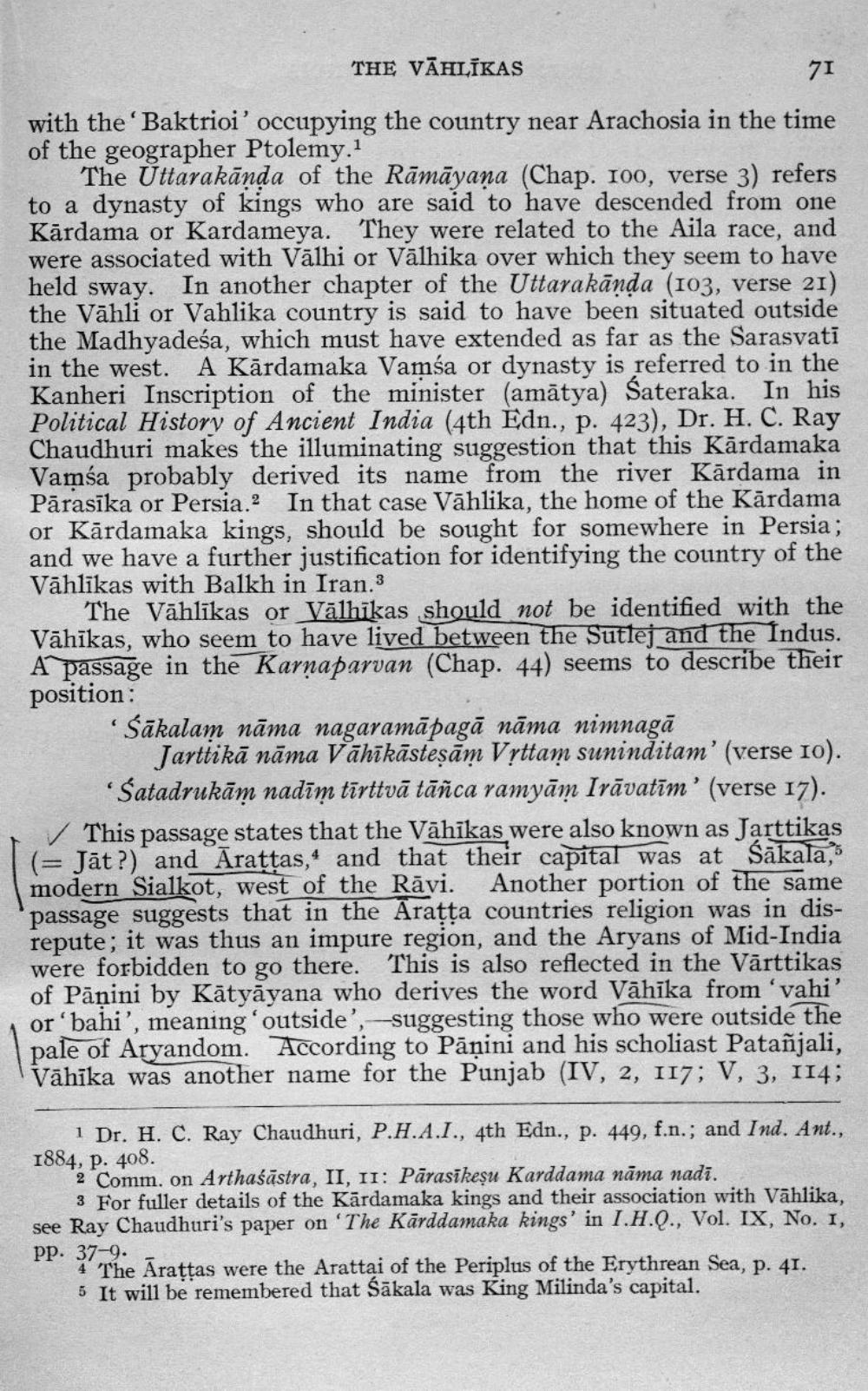________________
THE VAHLIKAS
71
with the 'Baktrioi' occupying the country near Arachosia in the time of the geographer Ptolemy.1
The Uttarakanda of the Rāmāyaṇa (Chap. 100, verse 3) refers to a dynasty of kings who are said to have descended from one Kardama or Kardameya. They were related to the Aila race, and were associated with Välhi or Välhika over which they seem to have held sway. In another chapter of the Uttarakanda (103, verse 21) the Vahli or Vahlika country is said to have been situated outside the Madhyadeśa, which must have extended as far as the Sarasvati in the west. A Kardamaka Vamsa or dynasty is referred to in the Kanheri Inscription of the minister (amatya) Śateraka. In his Political History of Ancient India (4th Edn., p. 423), Dr. H. C. Ray Chaudhuri makes the illuminating suggestion that this Kardamaka Vamsa probably derived its name from the river Kardama in Pārasika or Persia.2 In that case Vahlika, the home of the Kardama or Kardamaka kings, should be sought for somewhere in Persia; and we have a further justification for identifying the country of the Vahlikas with Balkh in Iran.3
The Vahlikas or Valhikas should not be identified with the Vähikas, who seem to have lived between the Sutlej and the Indus. A passage in the Karnaparvan (Chap. 44) seems to describe their position:
'Sakalam nāma nagaramapagā nāma nimnaga
Jarttikā nāma Vähikasteṣām Vrttam suninditam' (verse 10). Satadrukām nadim tirttvā tāñca ramyam Iravatim' (verse 17).
This passage states that the Vähikas were also known as Jarttikas (= Jat?) and Araṭṭas, and that their capital was at Sakala, modern Sialkot, west of the Rāvi. Another portion of the same passage suggests that in the Araṭṭa countries religion was in disrepute; it was thus an impure region, and the Aryans of Mid-India were forbidden to go there. This is also reflected in the Varttikas of Panini by Katyayana who derives the word Vähika from 'vahi' or bahi', meaning outside',-suggesting those who were outside the pale of Aryandom. According to Panini and his scholiast Patanjali, Vähika was another name for the Punjab (IV, 2, 117; V, 3, 114;
1 Dr. H. C. Ray Chaudhuri, P.H.A.I., 4th Edn., p. 449, f.n.; and Ind. Ant., 1884, p. 408.
2 Comm. on Arthaśastra, II, II: Parasikeṣu Karddama nama nadi.
3 For fuller details of the Kardamaka kings and their association with Vahlika, see Ray Chaudhuri's paper on 'The Karddamaka kings' in I.H.Q., Vol. IX, No. 1, PP. 37-9.
4 The Araṭṭas were the Arattai of the Periplus of the Erythrean Sea, p. 41. 5 It will be remembered that Sakala was King Milinda's capital.




